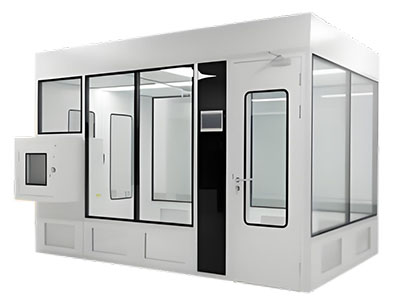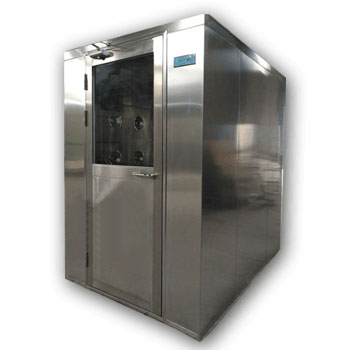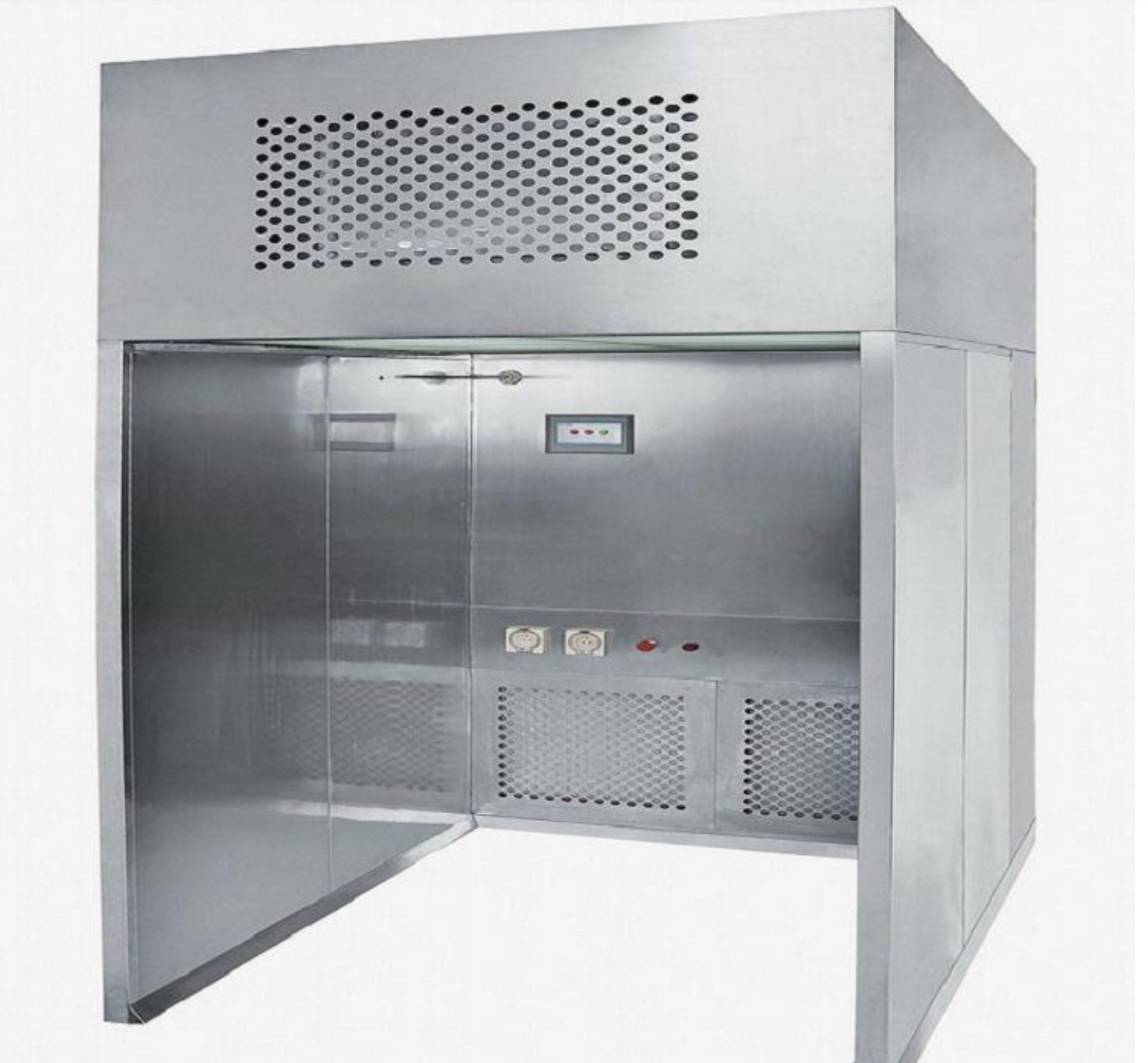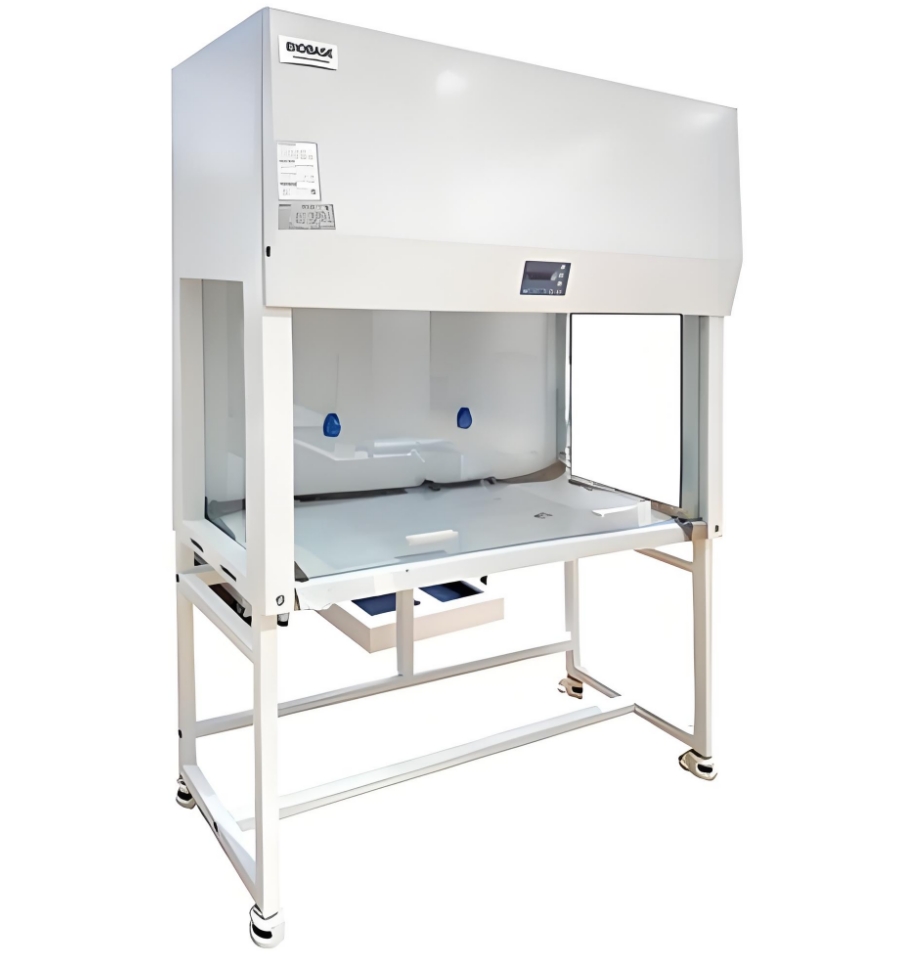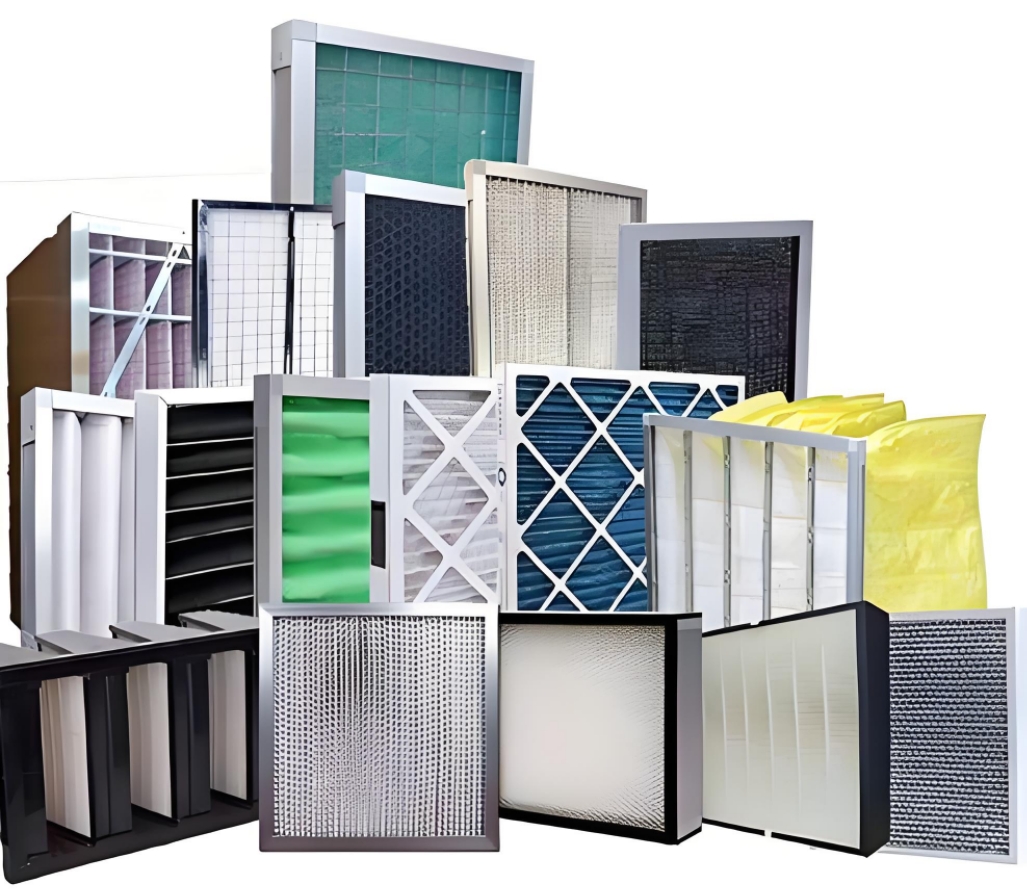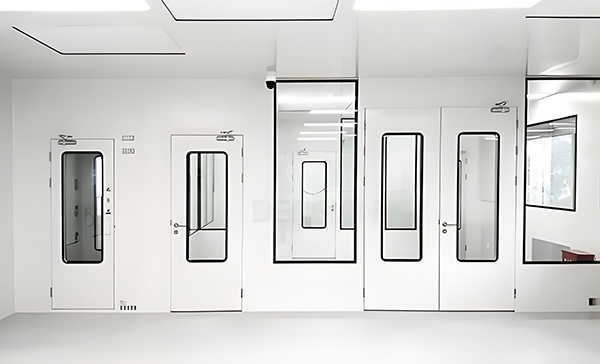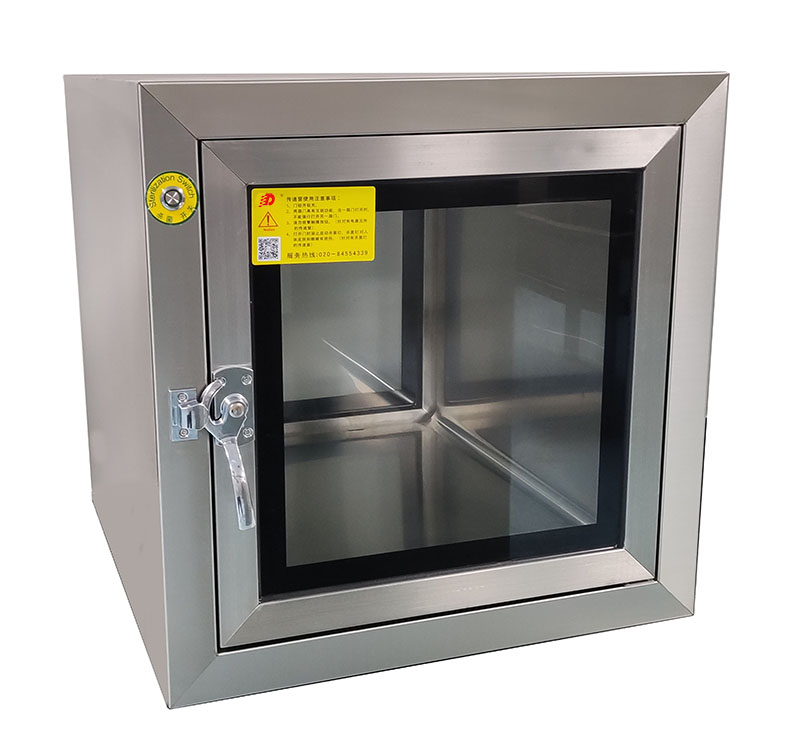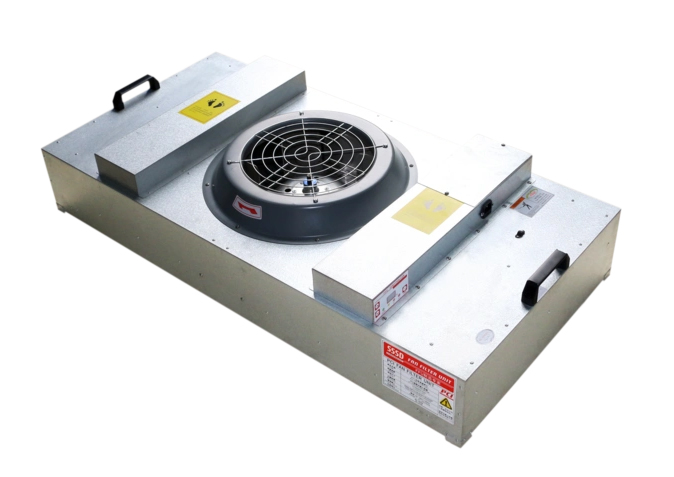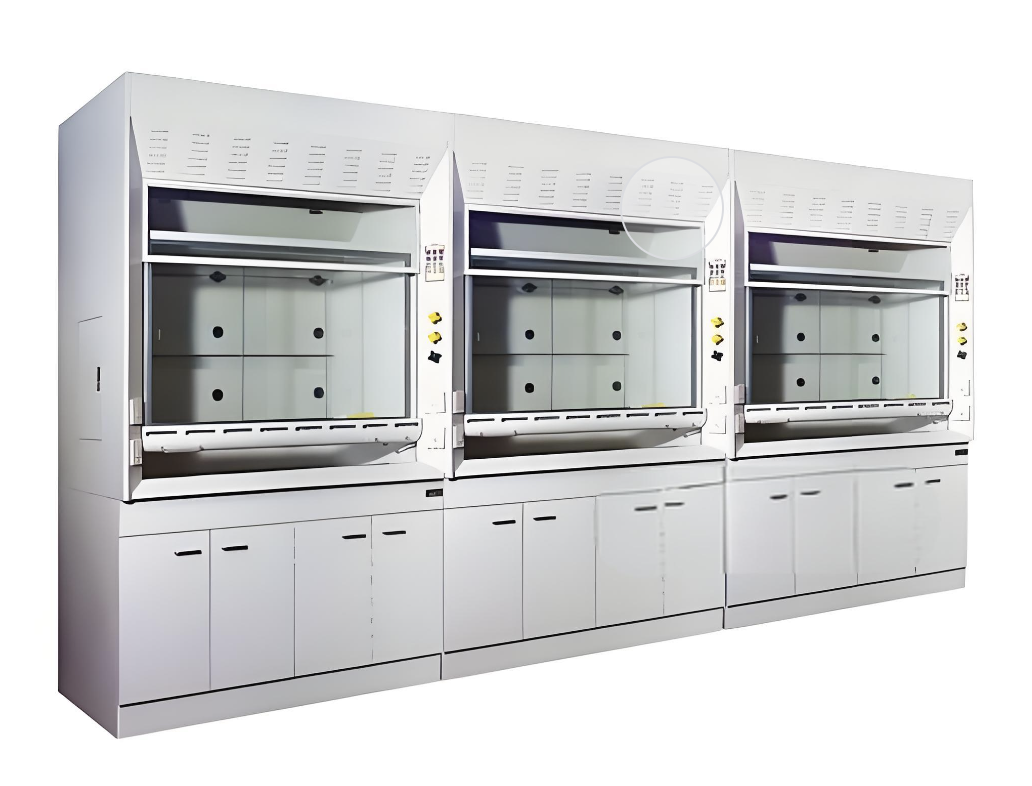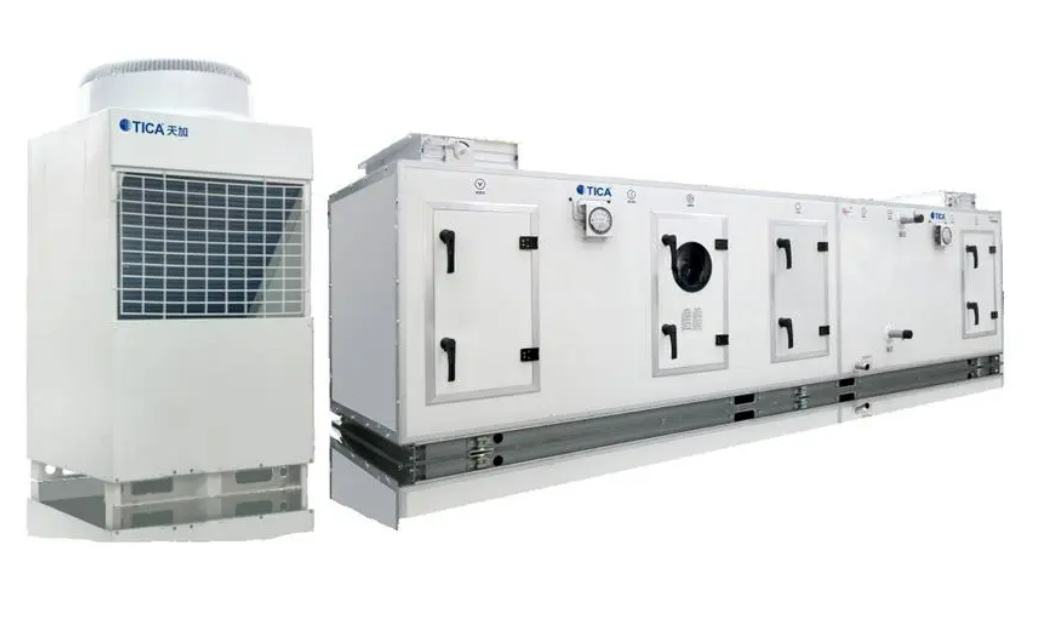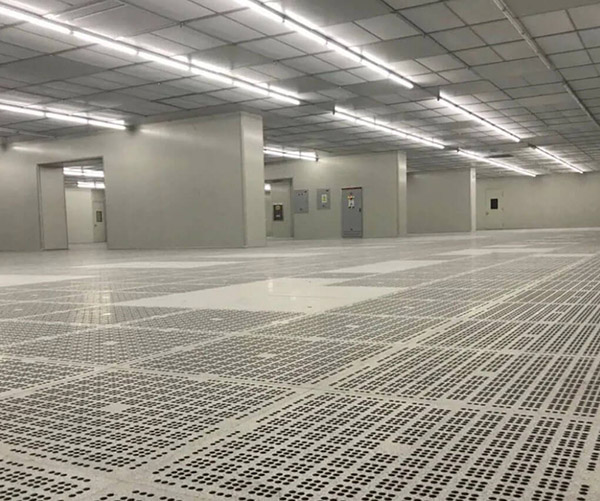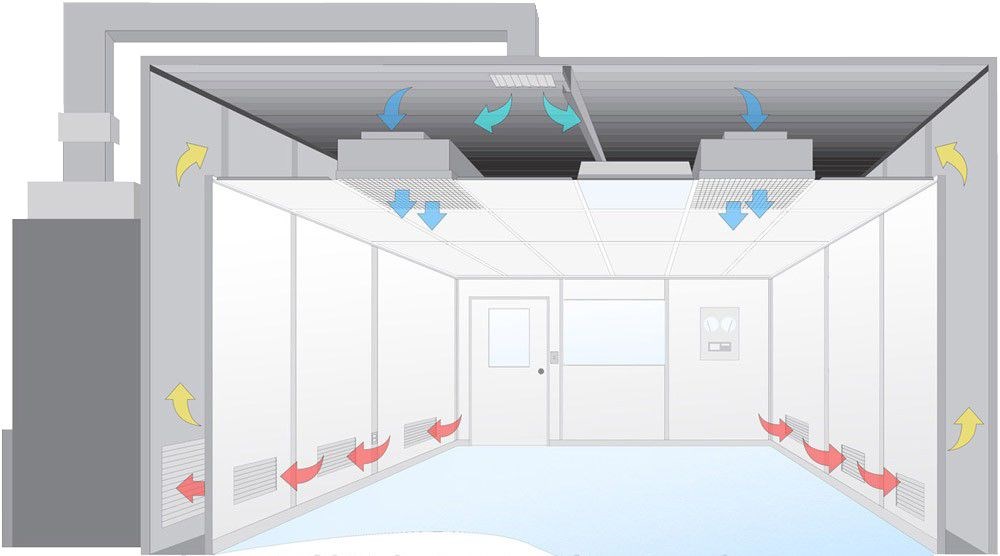
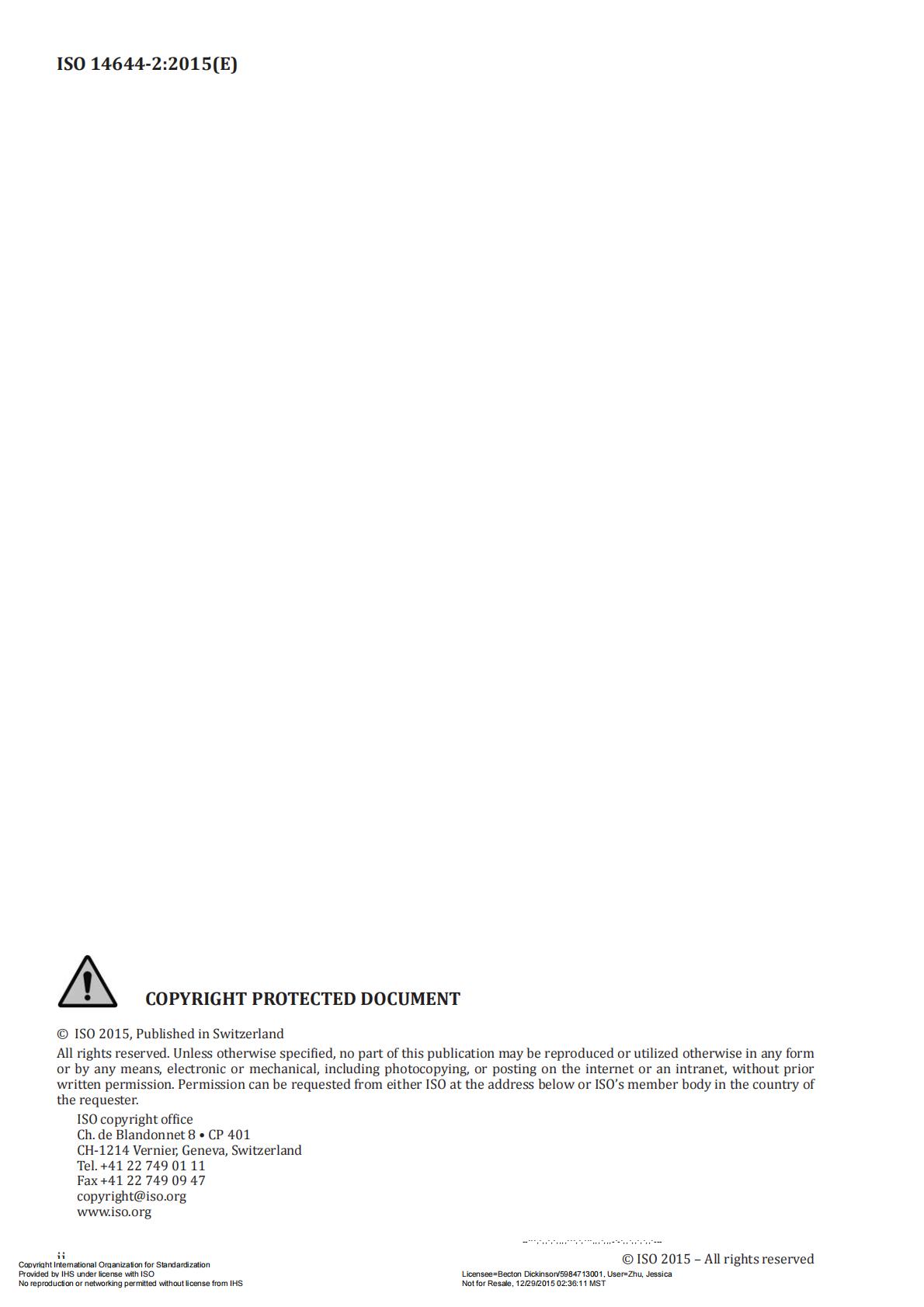
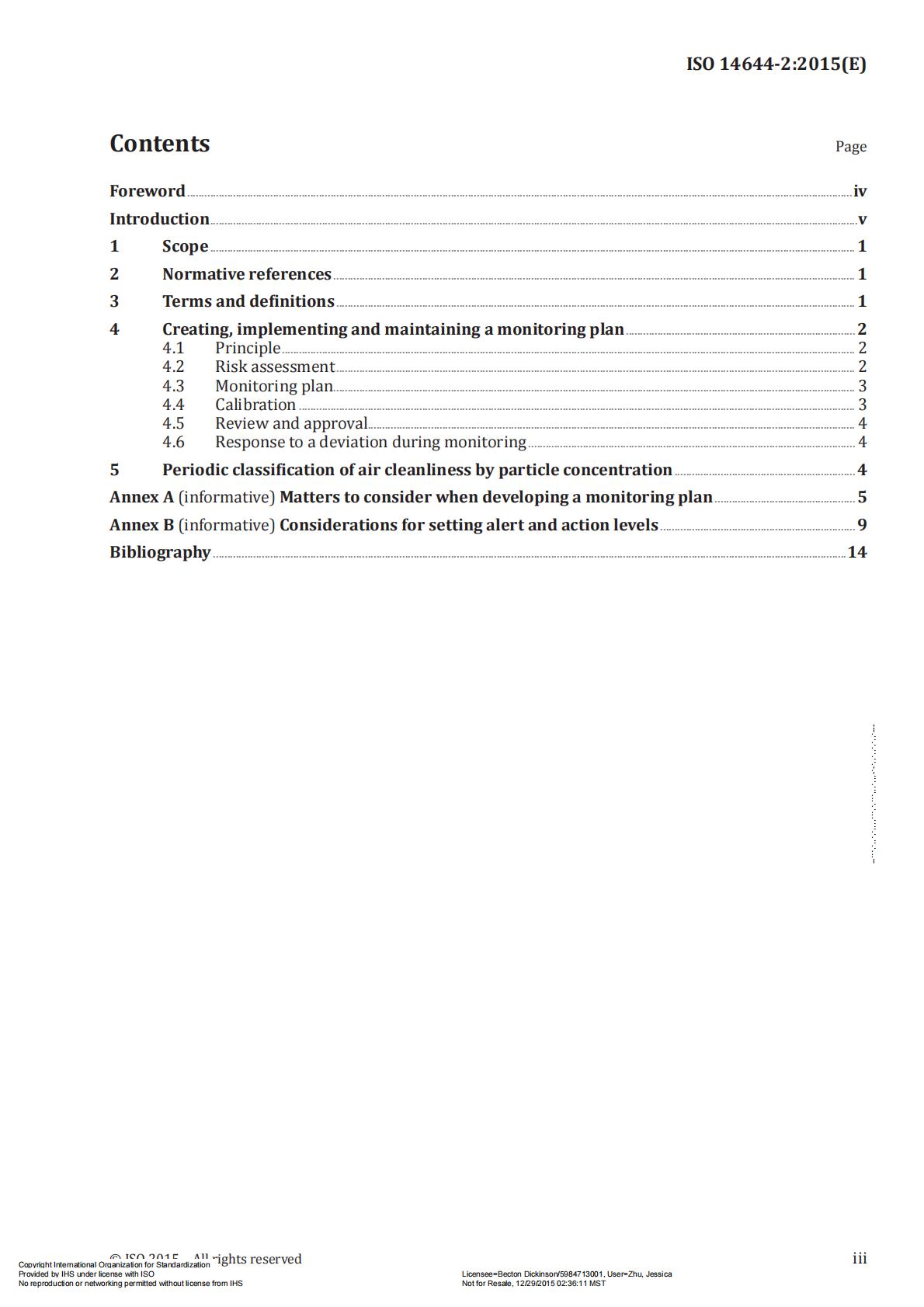
Foreword
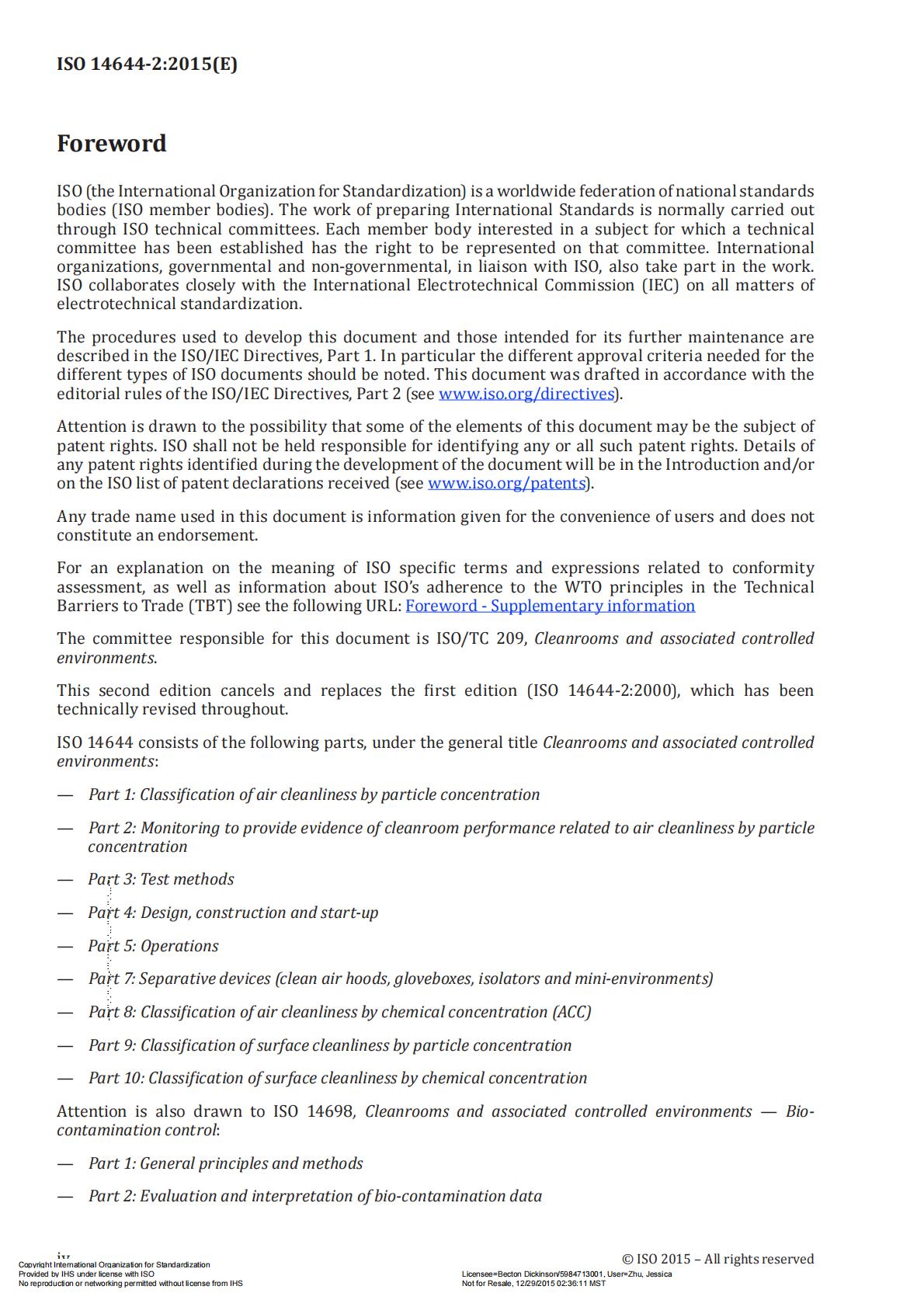
Introduction
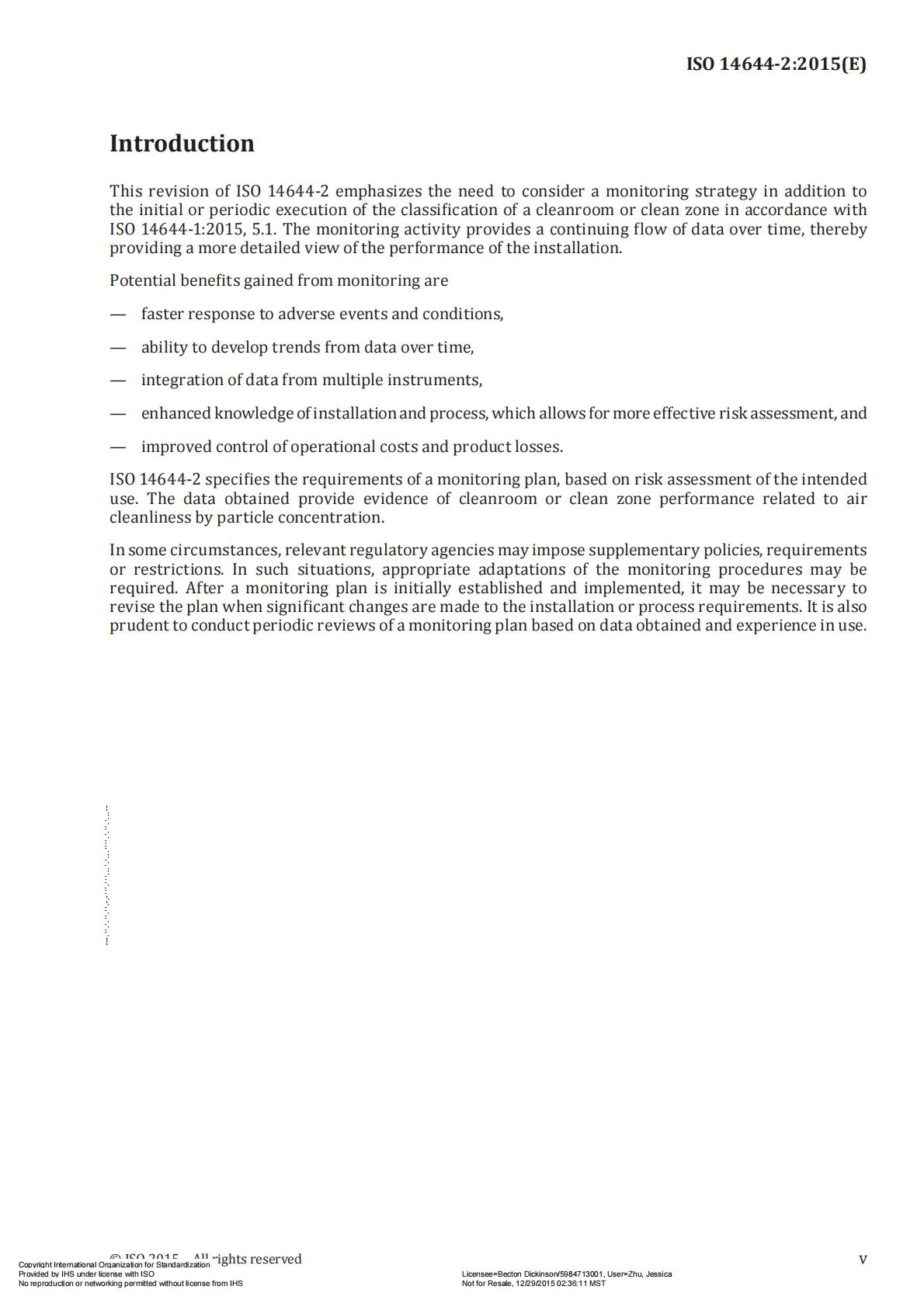
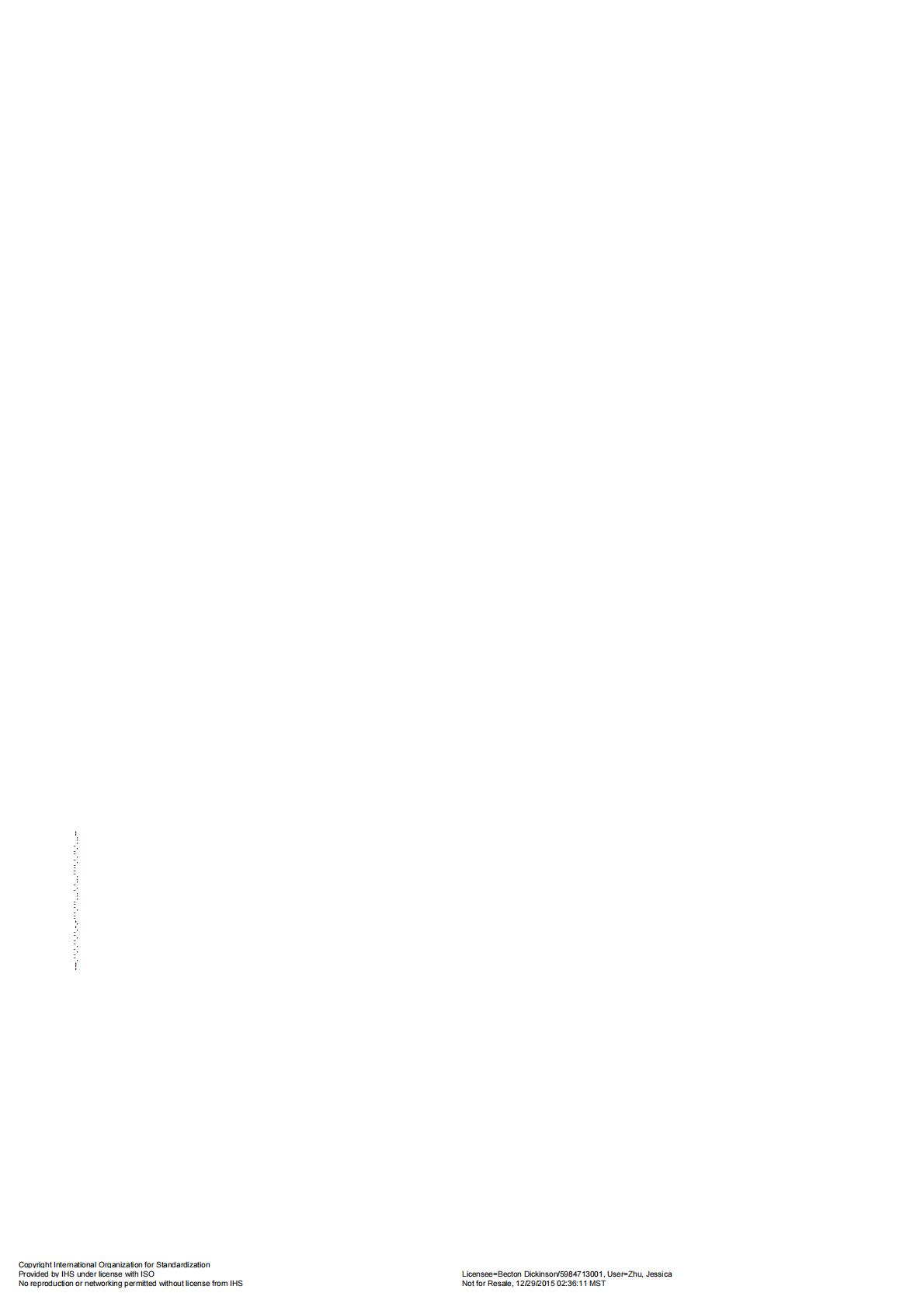
1.Scope
2.Normative references
3.Terms and definitions
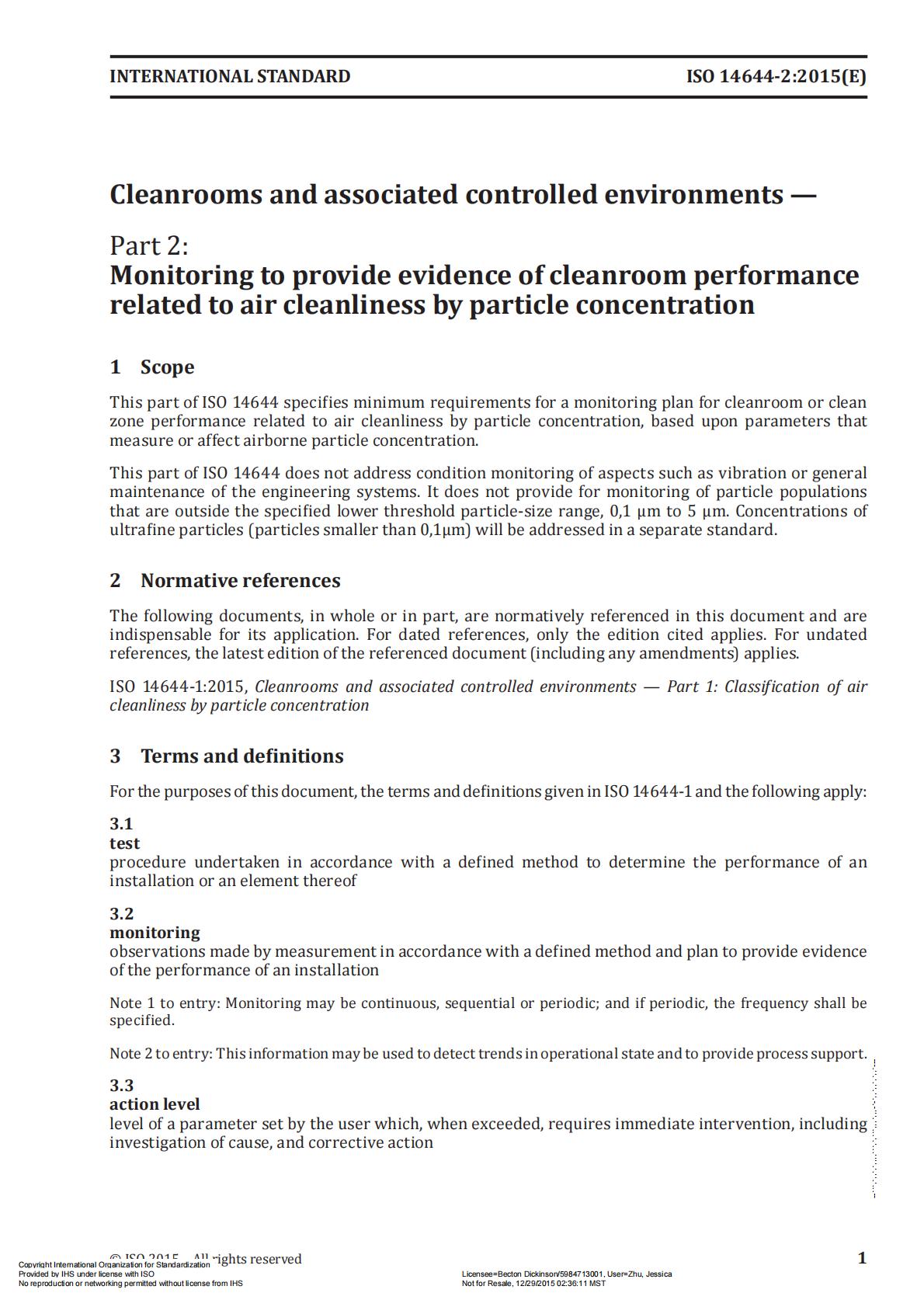
4.Creating,implementing and maintaining a monitoring plan.
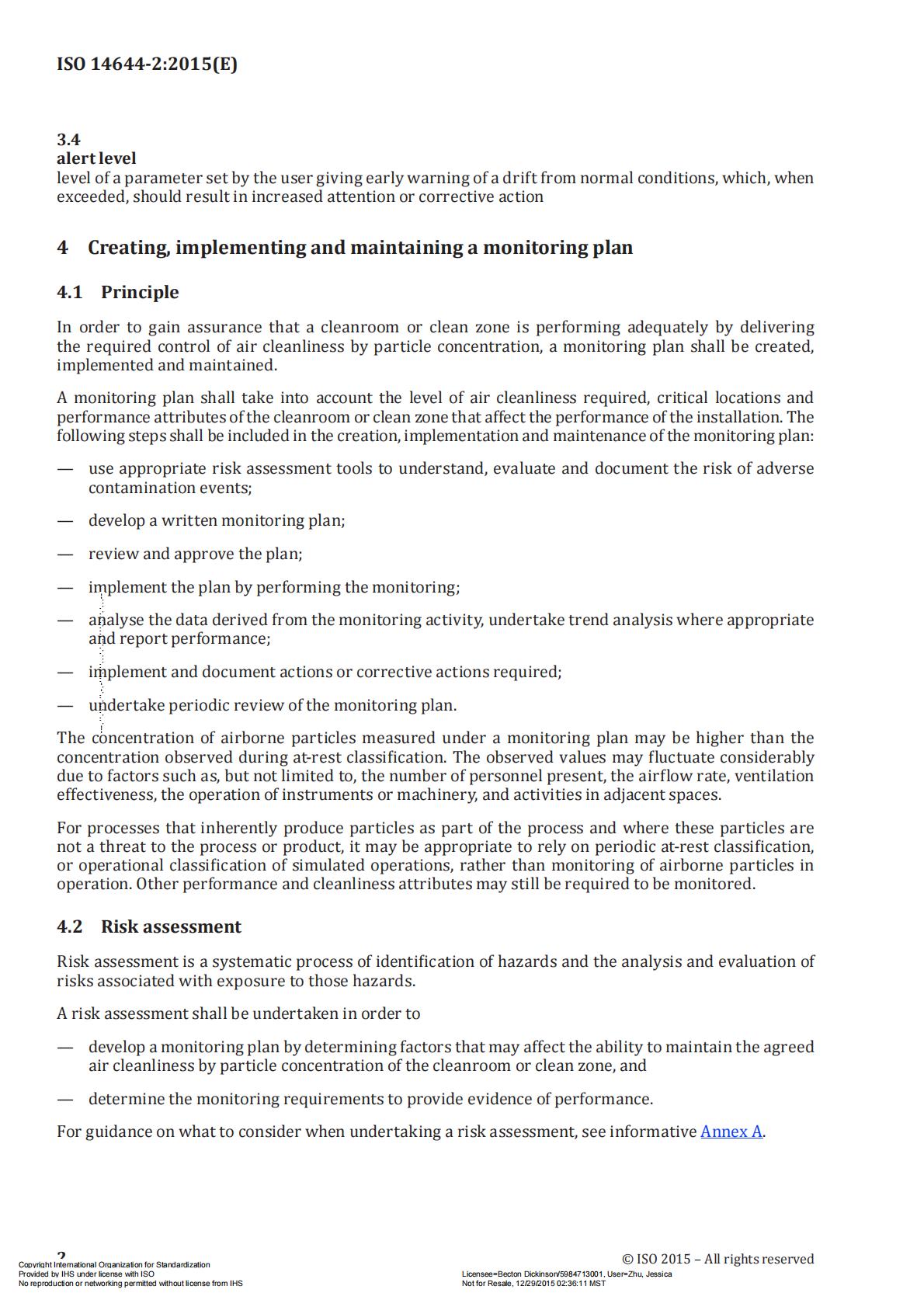
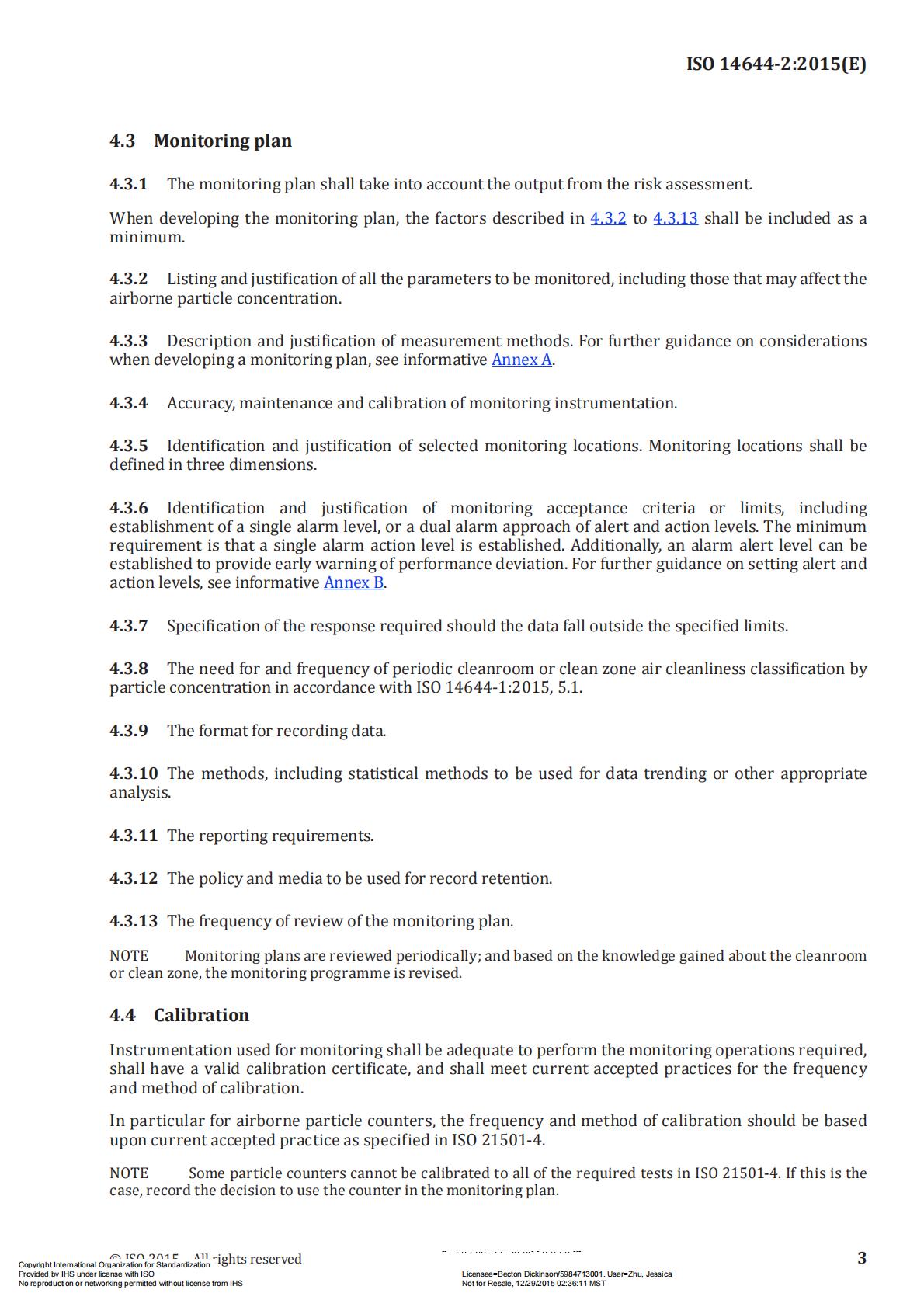
5.Periodic classification ofair cleanliness by particle concentration.
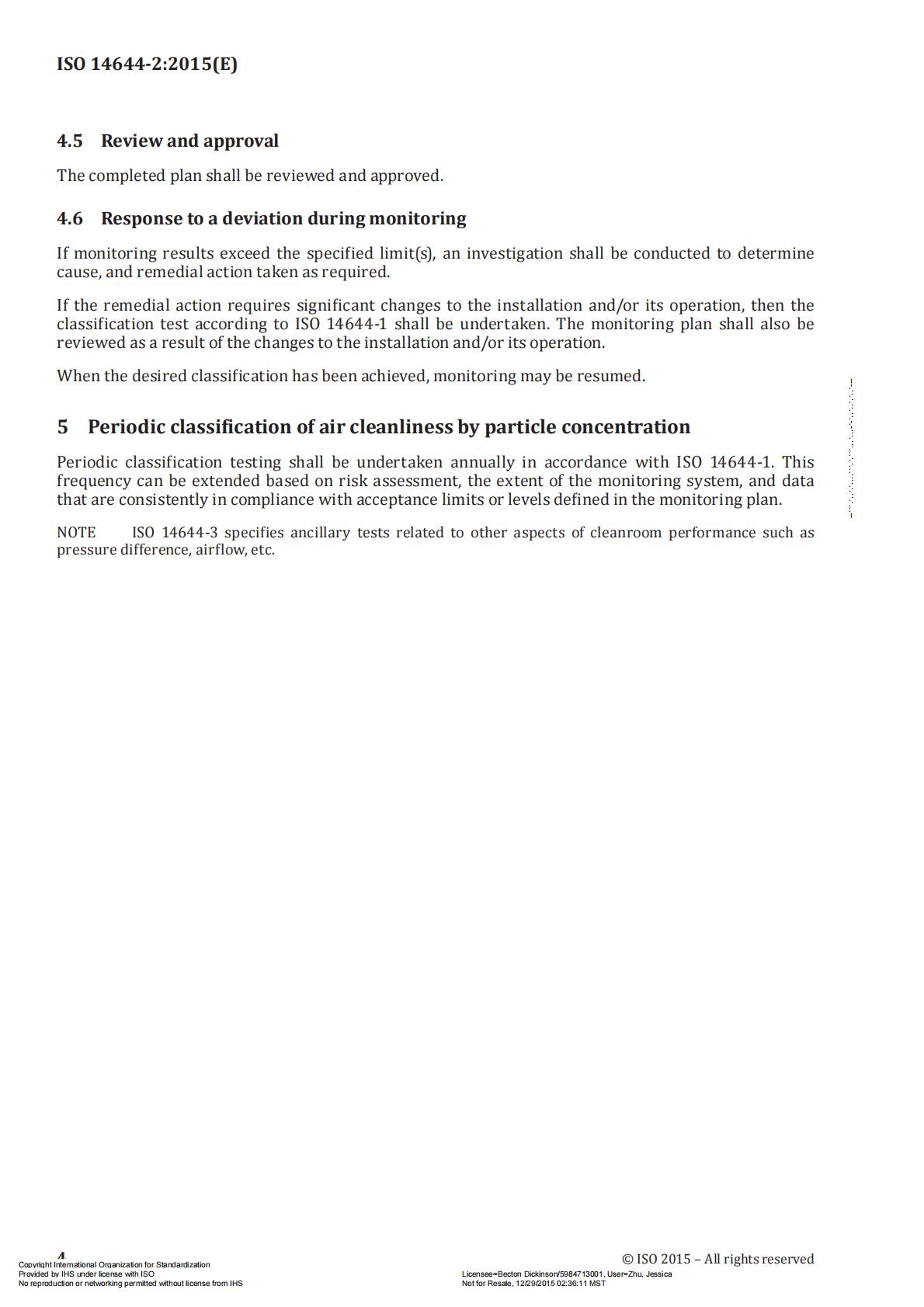
Annex A (informative) Matter's to consider when developing a monitoring plan.
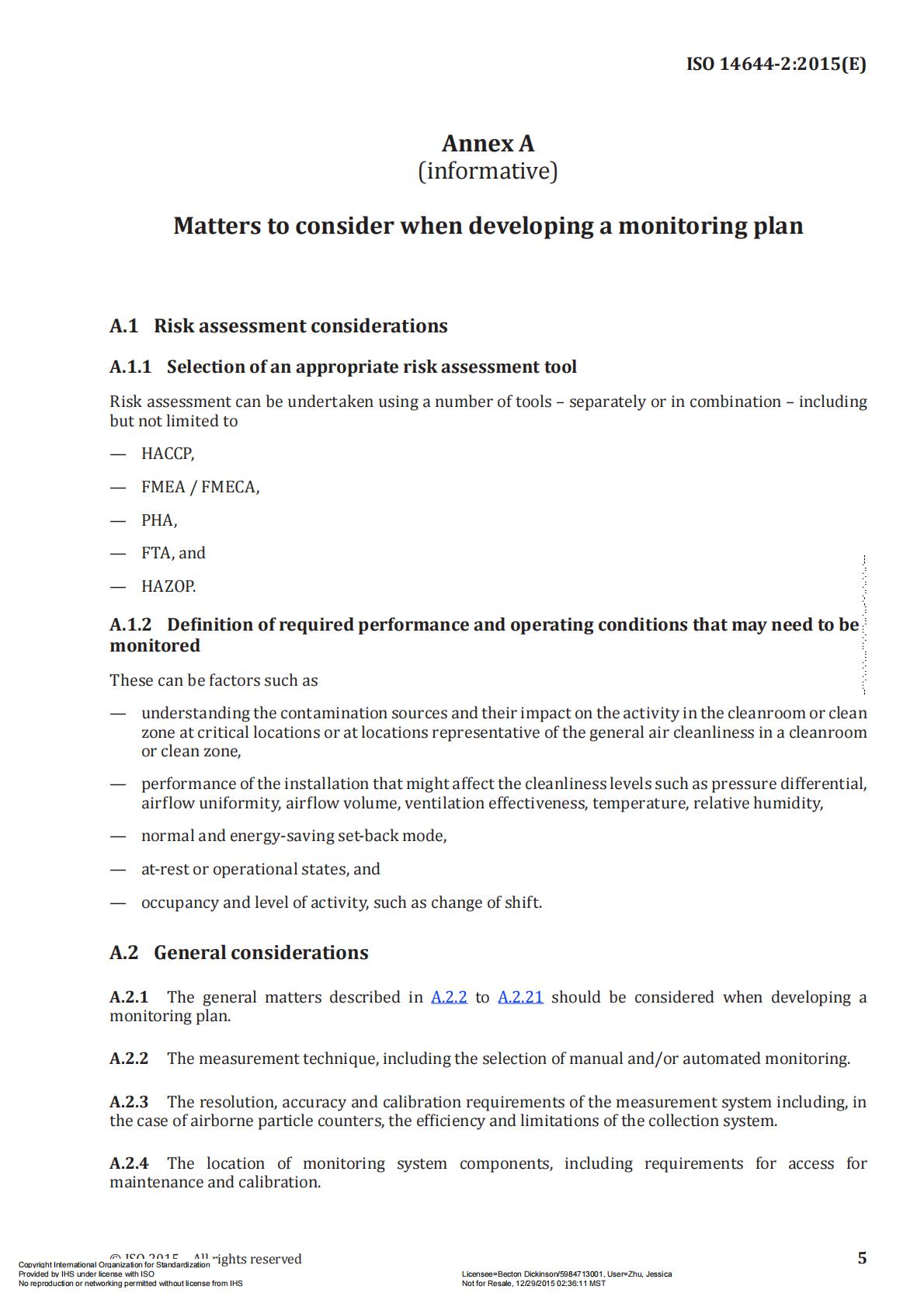
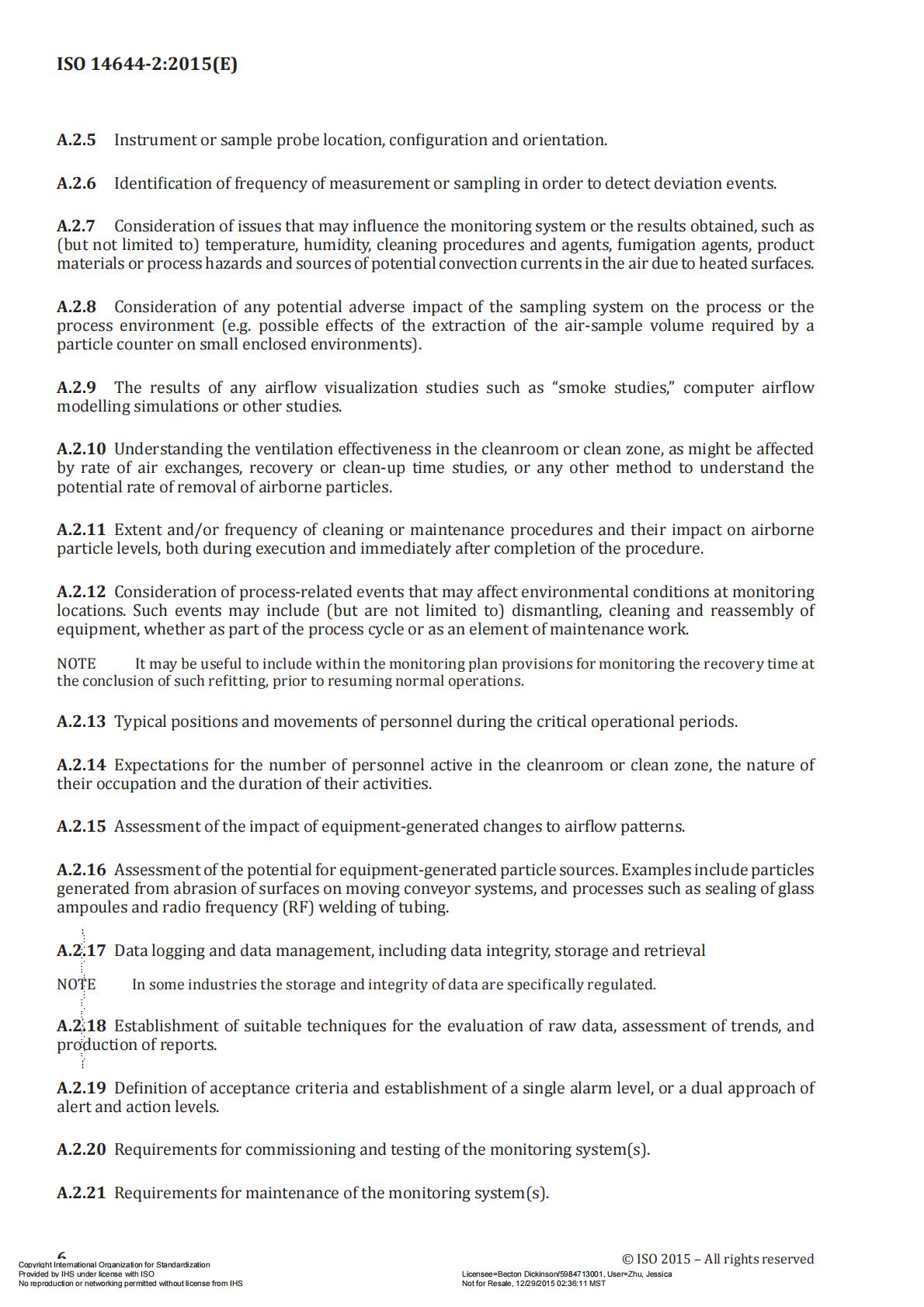
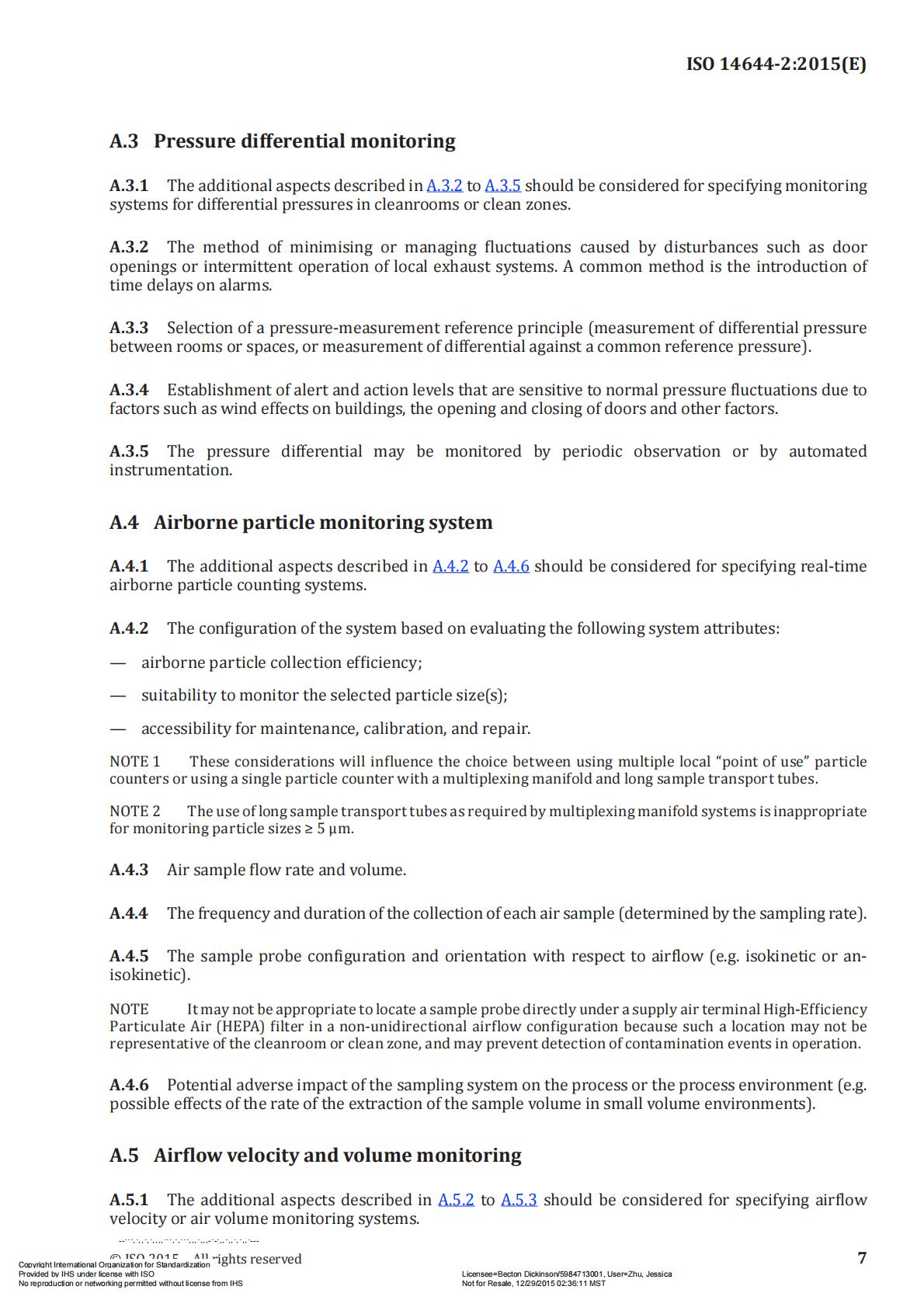
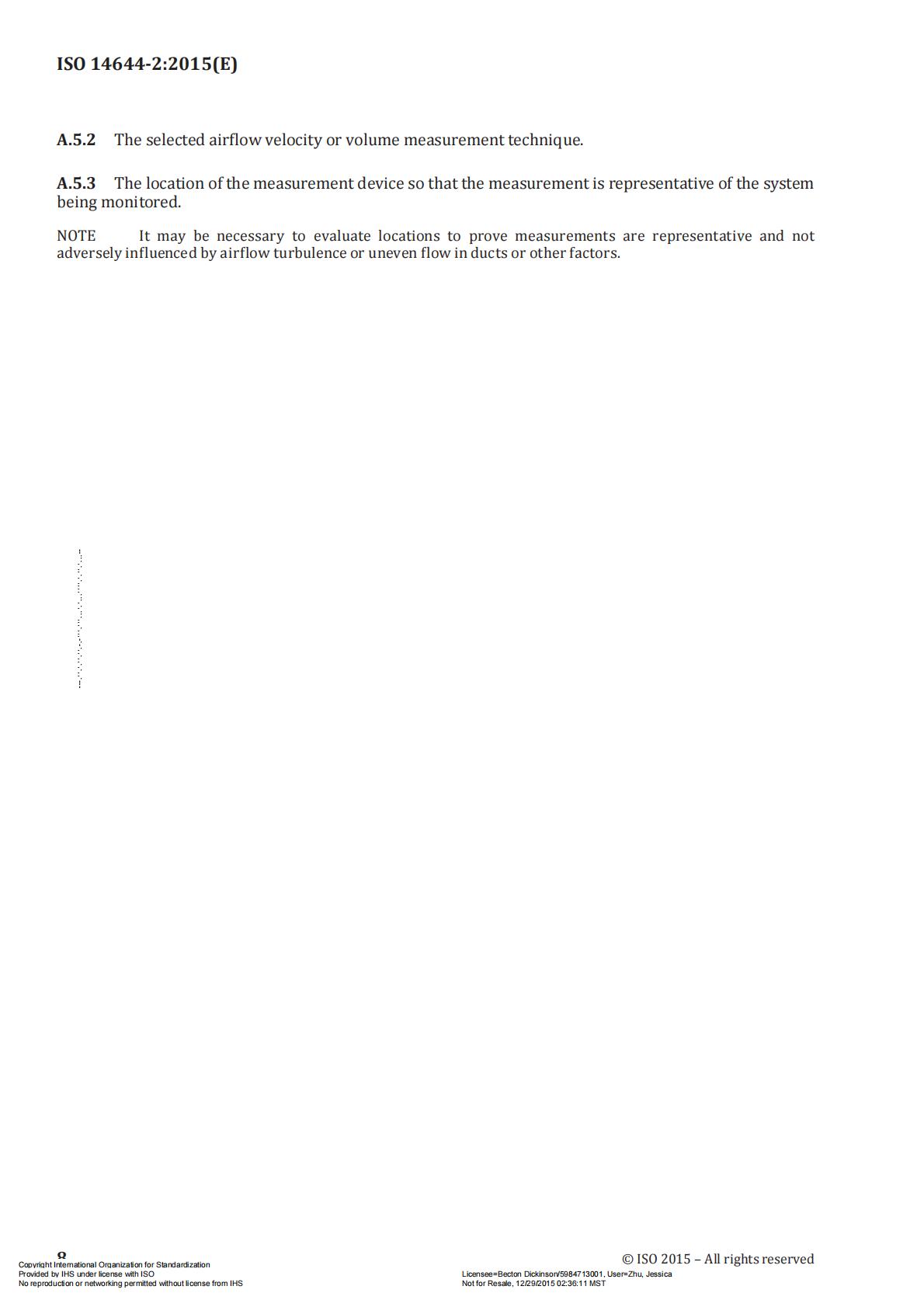
Annex B (informative) Considerations for setting alert and action levels
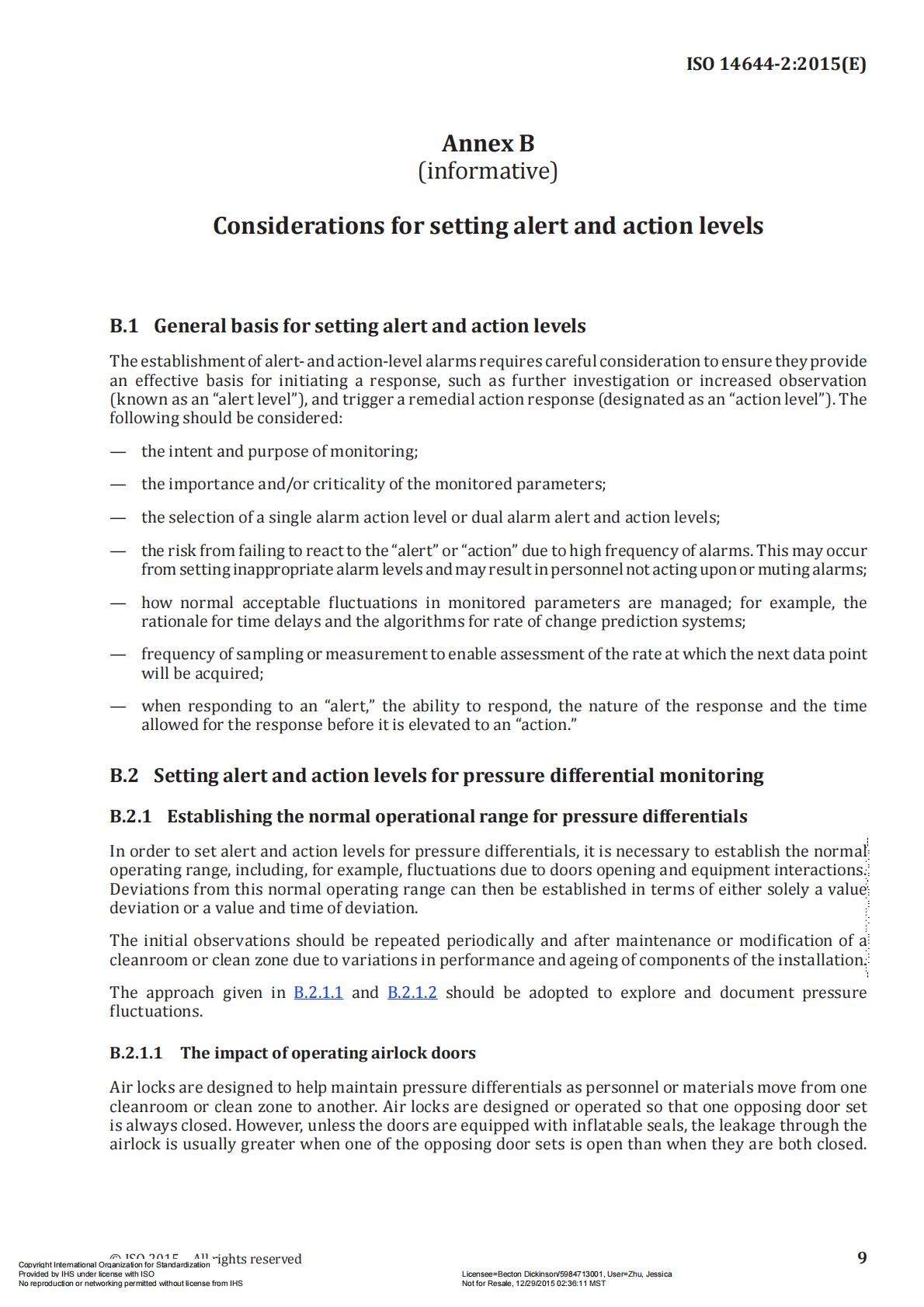
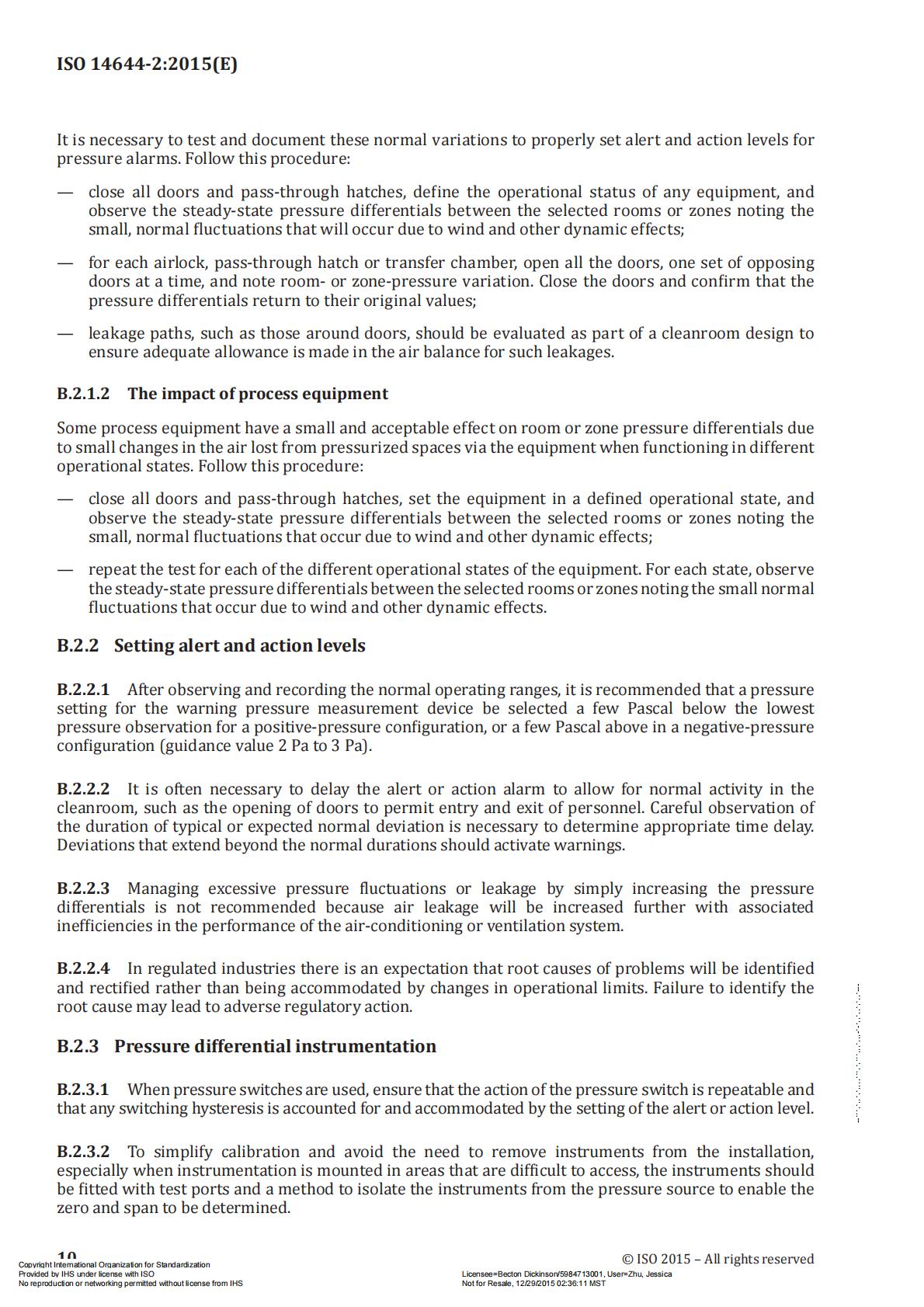
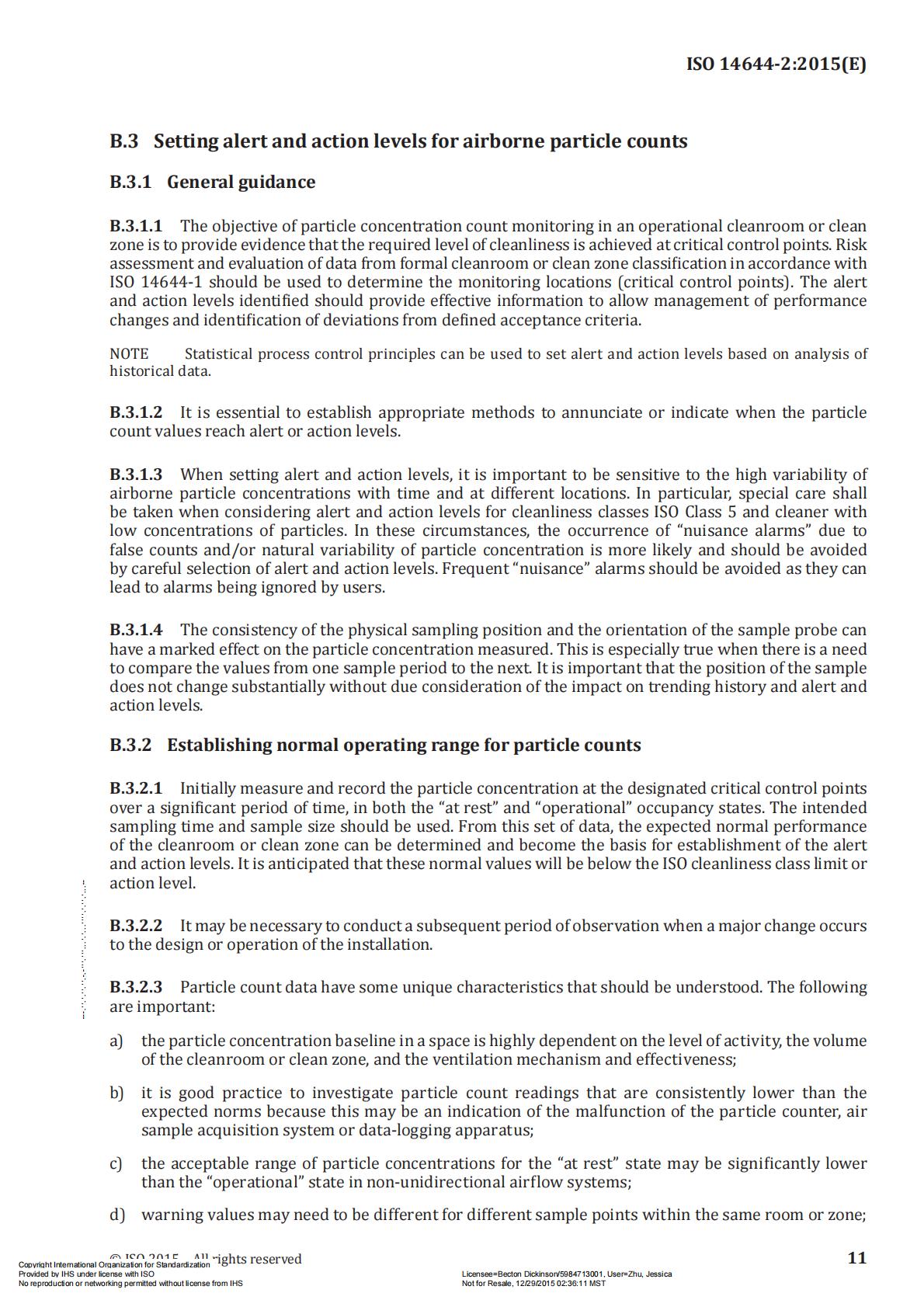
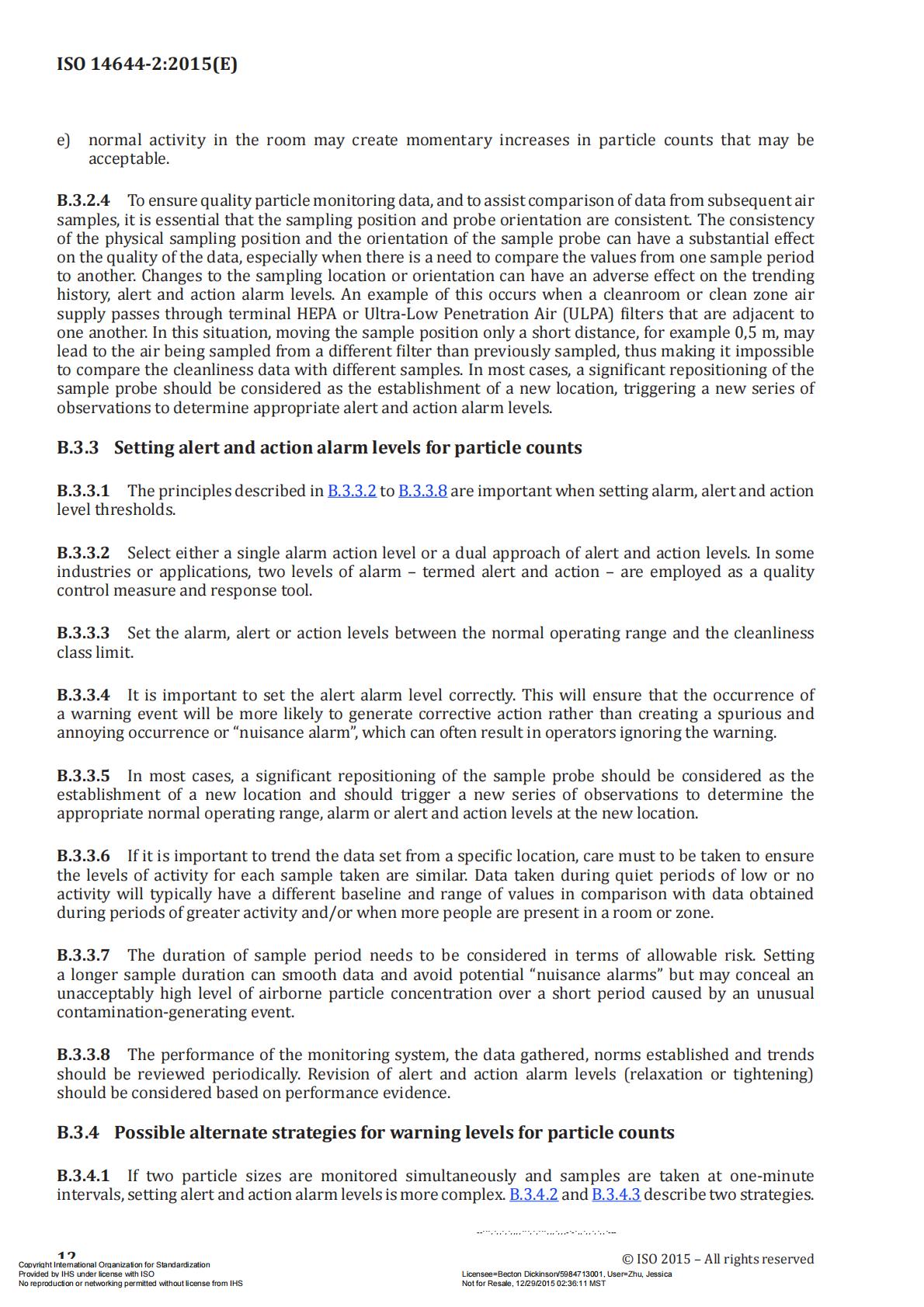
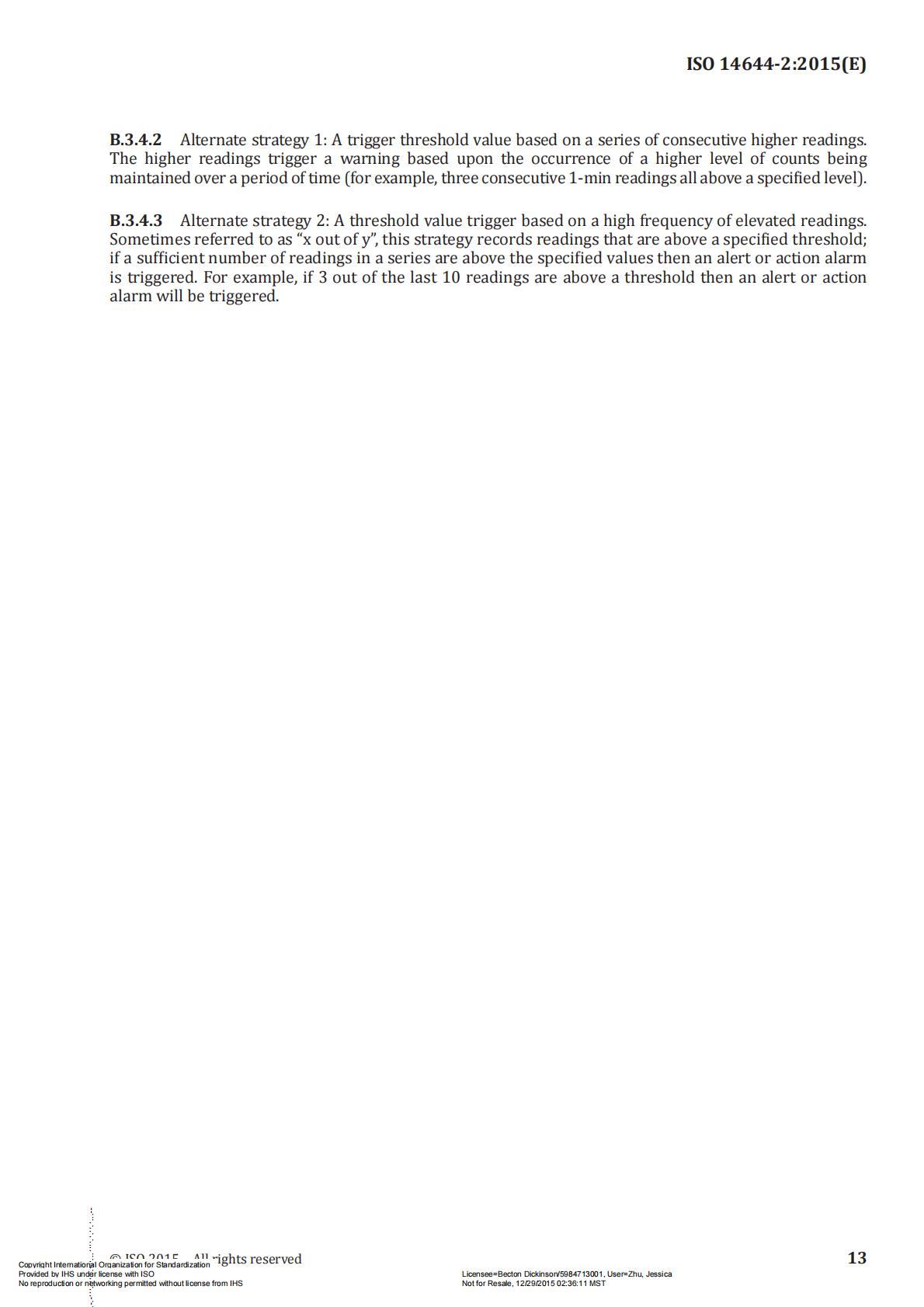
Bibliography.
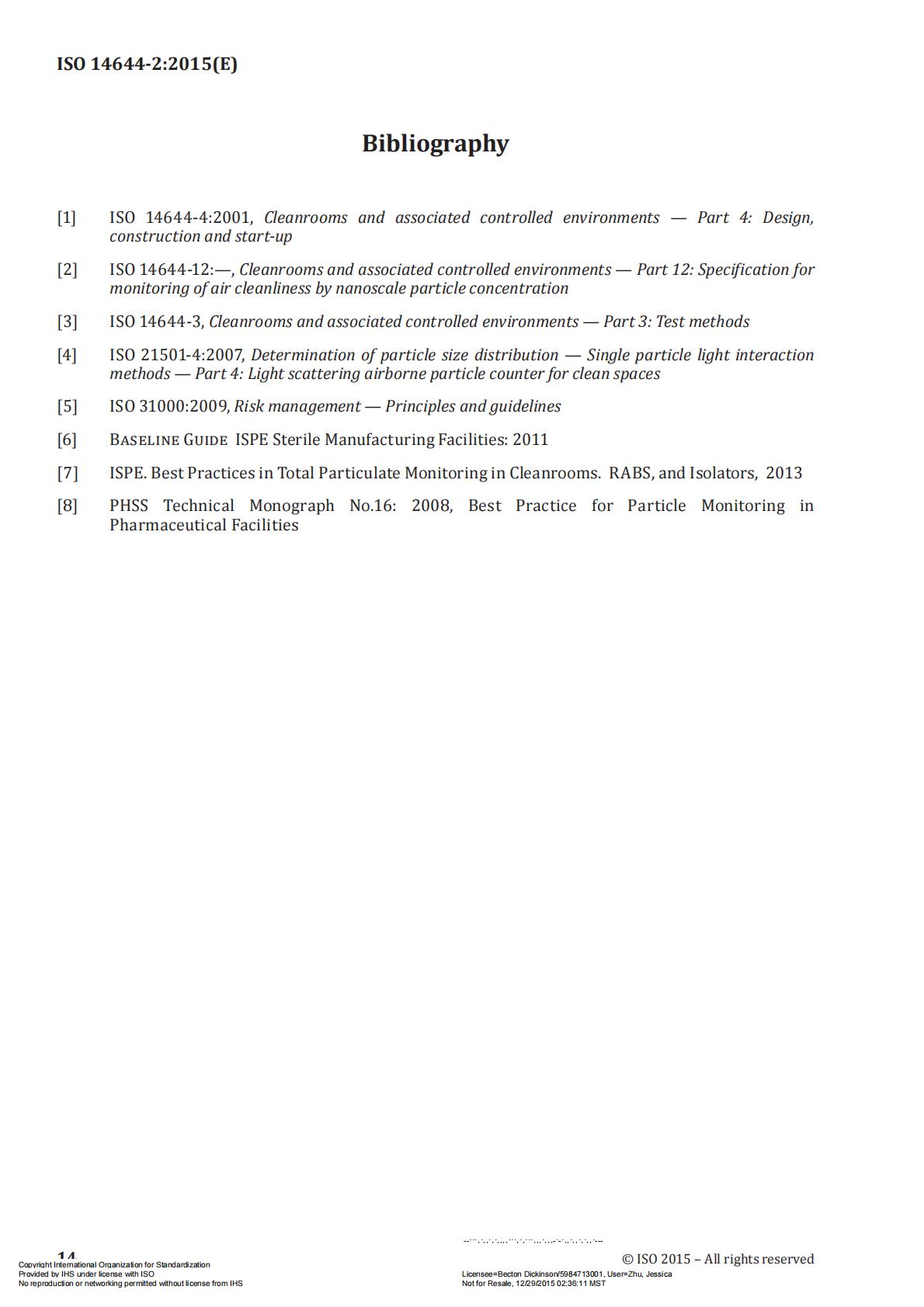

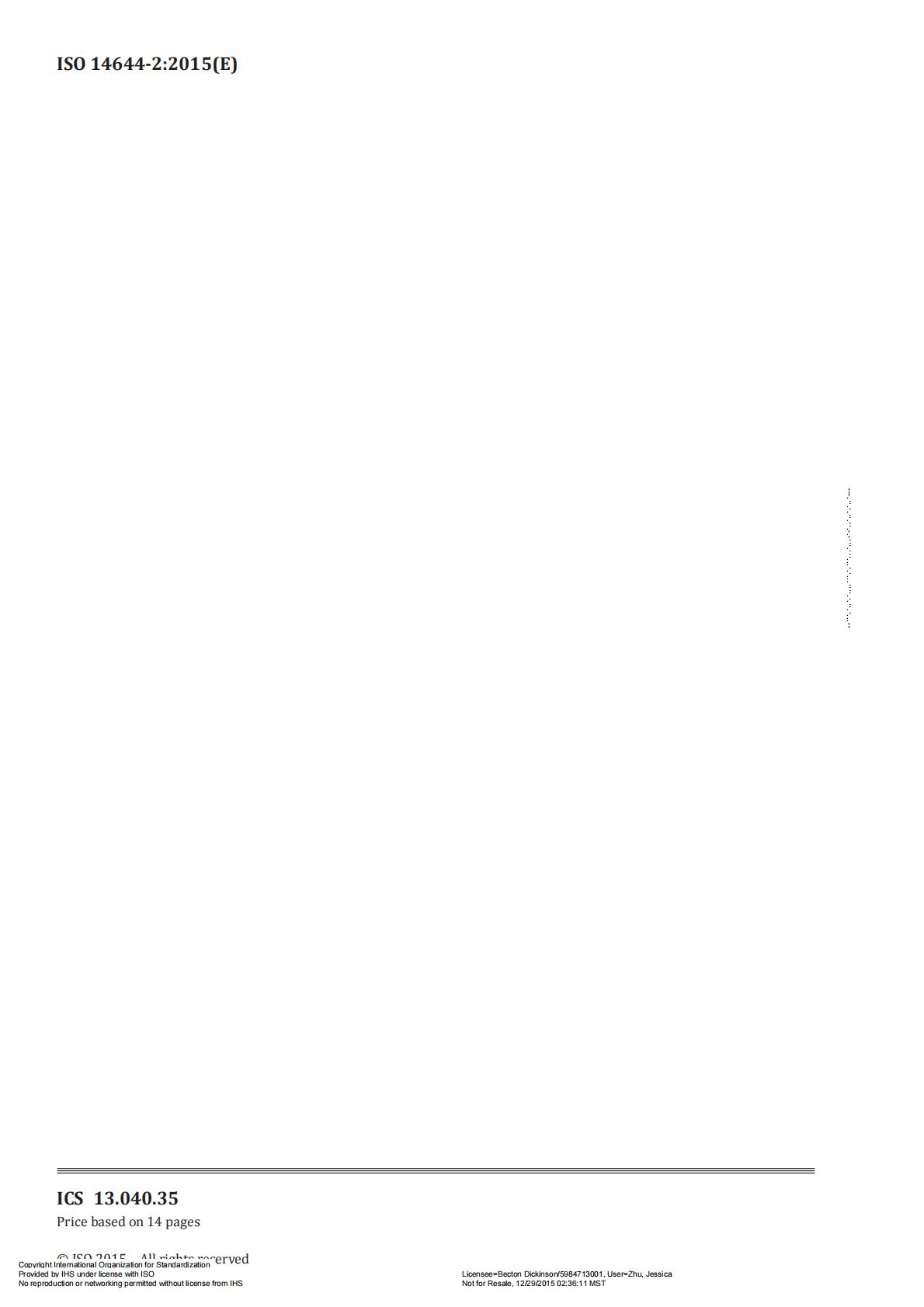
1. Monitoring Requirements
The standard emphasizes continuous monitoring of airborne particulate contamination, defining monitoring frequency and types based on Cleanroom cleanliness classification. This ensures the environment remains within specified limits, minimizing contamination risks.
2. Measurement Methods
iso 14644-2 outlines acceptable methods for measuring airborne particles, including active (using air samplers) and passive (particle settling) sampling techniques. It specifies calibration and operational parameters for measurement devices to ensure data accuracy.
3. Data Evaluation
Organizations must establish baseline particle count standards and use statistical approaches to analyze data. This helps identify trends or deviations, enabling timely corrective actions to maintain cleanroom integrity.
4. Documentation and Reporting
Thorough documentation of monitoring activities, results, and corrective actions is mandatory for regulatory compliance, transparency, and accountability. Regular reporting keeps stakeholders informed about cleanroom performance.
ISO CleanRoom Classification and Particle Count Limits
ISO 14644 defines cleanroom classes based on particle concentration limits. Below is a summary of key classes and their particle count limits:
| ISO Class | Max. Particles >0.5 Microns (per m³) | Max. Particles >5 Microns (per m³) | Typical Air Changes Per Hour (ACH) |
|---|---|---|---|
| Class 1 | 10 | 0 | 500-600 |
| Class 2 | 100 | 29 | 300-400 |
| Class 3 | 1,000 | 3 | 100-200 |
| Class 4 | 10,000 | 29 | 60-100 |
| ISO 5 | 100,000 | 29 | 30-60 |
Significance of Air Changes Per Hour (ACH)
ACH is a critical parameter in Cleanroom design, referring to the number of times air is replaced within an hour. Higher ACH dilutes and removes contaminants, but must be balanced with energy efficiency. For example, ISO 5 Cleanrooms typically require 30-60 ACH, while ISO 1 may need 500-600 ACH.
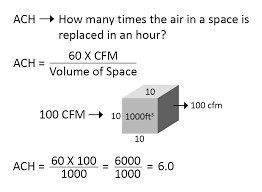
Current Version of ISO 14644
The ISO 14644 series was revised in 2015 (and 2019 for part 3) to align with technological advancements. Key changes include:
- Flexible particle count limits based on specific class requirements
- Emphasis on ongoing monitoring over initial testing
- Enhanced adaptability to various cleanroom applications
Latest Revisions:
| Standard | Year of Revision | Focus Area |
|---|---|---|
| iso 14644-1 | 2015 | Classification of cleanrooms |
| ISO 14644-2 | 2015 | Monitoring cleanroom environments |
| ISO 14644-3 | 2019 | Testing methods for cleanrooms |
Why 0.5 and 5 Micron Particle Counts Matter in Pharmaceuticals
In the pharmaceutical industry, monitoring particles at 0.5 and 5 microns is critical for product safety:
- 0.5 micron particles: Often include harmful microorganisms that can compromise product efficacy
- 5 micron particles: Can affect product quality and integrity, leading to defects
Regulatory bodies emphasize these measurements to ensure compliance and enhance safety in cleanroom environments, directly impacting pharmaceutical product quality and patient safety.
ISO 14644-2: Ensuring Cleanroom Integrity for Critical Industry Applications
![]() ISO 14644-2.pdf Download
ISO 14644-2.pdf Download
Key Components of ISO 14644-2
 +86 18186671616
+86 18186671616 Jason@cleanroomequips.com
Jason@cleanroomequips.com
 MENU
MENU

